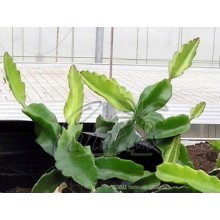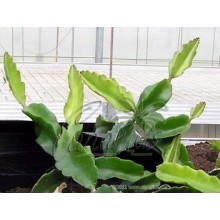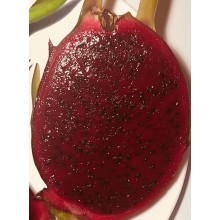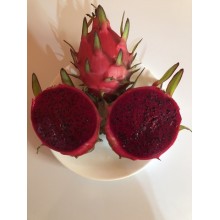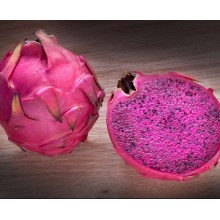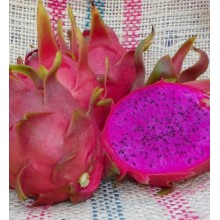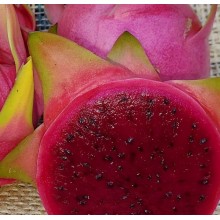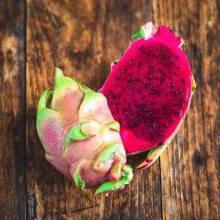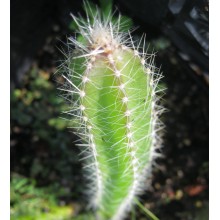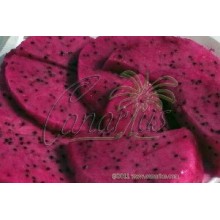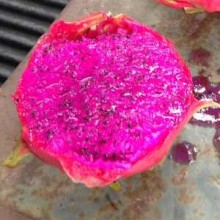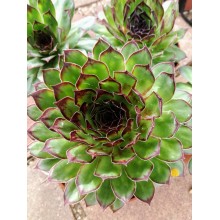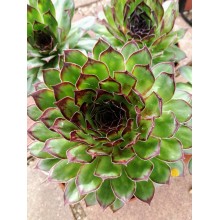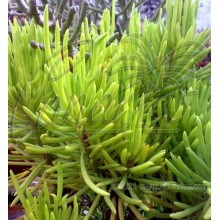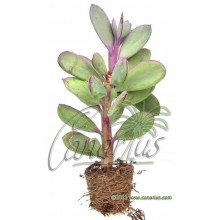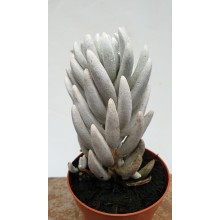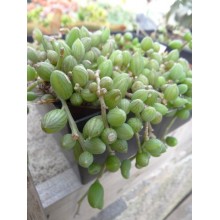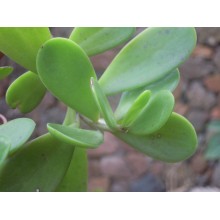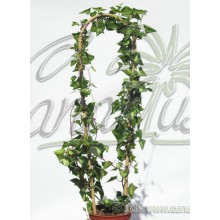Allgemeine Pflanzen Es gibt 1882 Artikel.

Wenn Sie exotische Pflanzen mögen, sind Sie hier an der richtigen Adresse. Canarius bietet die schwierig zu findenden exotischen Pflanzen an die in Gartenzentren nur selten erhältlich sind. Unser Shop hat natürliche Arten sowie seltene Hybriden im Angebot. Wir bieten exotische Pflanzen von den kanarischen Inseln.
Wir verschicken Bestellungen nach überall in Europa, wie auch weltweit. Die Pakete werden in nur wenigen Tagen nach der Verschickung Ihr Zuhause erreichen (allerdings brauchen wir ein paar Tage für die Bearbeitung). Kontaktieren Sie uns gerne wenn Sie Fragen haben sollten.
Unterkategorien
-
Sukkulenten
Die Wüsten trockenen Gebiete dieser Erde bieten den interessantesten Pflanzen ein Zuhause. Canarius bietet ein wachsendesSortiment von sukkulenten Pflanzen von höchster Qualität an, da diese gewachsen sind draußen in der prallen Sonne der kanarischen Inseln.
Sukkulenten oder "fette Pflanzen“ sind wasserspeichernde Arten, die an trockene Bedingungen gut angepasst sind. Sie speichern Sukkulenz (Saft, Wasser) in ihren Blätter, Stämmen oder Wurzeln und haben oft einen dickes und fleischiges Aussehen.
-
Exoten
Exotische Pflanzen sind Arten, die aus anderen Teilen der Erde stammen, deren natürliche Umgebung dies nicht ist. Normalerweise haben sie einen ornamentalen Charakter, wachsen üppig, mit farbenfrohen Blüten, ungewöhnlichem Aussehe... Im Folgenden können Sie finden eine große Auswahl von exotischen Pflanzen:von Bromelien, Heliconias, Palmen bis hin zu Hauspflanzen.
Exotische Pflanzen haben keinen besonderen Nutzen. Sammler kaufen diese Art von Pflanzen aufgrund ihrer Seltenheit, als Innen- oder im Freien Dekorations, abhängig von ihren Ansprüchen.
-
Obst und Kräuter
Obst, Kräuter und medizinische Pflanzen sollen zu einer besseren Gesundheit führen. In dieser Sektion erzeugt jeder Pflanzentyp einen gesunden Effekt, sowohl Obstbäume (Feijoa, Ananas, Fina de Jete...) als auch Pflanzen für die Gesundheit wie Graviolen, Aloe vera, Callisia fragrans...
Im normalen Stoffwechsel aller Lebewesen produziert der Organismus Substanzen aus Nährstoffen, die in der Umgebung vorhanden sind; manche dieser Chemikalien sind ein Teil der Prozesse in allen (oder beinahe) Arten von Lebewesen. Normalerweise sind die nutzbaren Verbindungen in einigen Teilen konzentriert: Blätter, Samen, Blüten...
Finden Sie Ihre empfehlenswerte Pflanze heraus und kaufen Sie sie online!
-
Besonderheiten
Auf canarius.com probieren wir Grenezn im Bereich der Botanik zu beseitigen. In unserem Onlineshop versuchen wir den Kauf/Verkauf von Pflanzen nach überall auf der Welt zu vereinfachen. Daher züchten wir vond den gewöhnlichsten bis hin zu den seltensten Pflanzen alles, wie Sie in dieser Sektion sehen können.
-
Selenicereus 'Hybridum' - Pitahaya
Selenicereus 'Hybridum' - Pitahaya
One of the best selection, imported from Reunion island. It bears round fruits with red flesh.
21,70 € -
Selenicereus 'JC03' - Pitahaya
Selenicereus 'JC03' - Pitahaya
Rooted cutting of 20-25 cm. A good pollinator Hylocereus used by cultivators of Reunión Island for H. undatus, H. purpusii e H. hybrids. The taste of the fruits is not the best but it is still nice to eat.
23,00 € -
Selenicereus 'JC05' - Pitahaya
Selenicereus 'JC05' - Pitahaya
We offer a rooted cutting of 20-25 cm
21,70 € -
Selenicereus 'Sin Espinas'
Selenicereus 'Sin Espinas'
This thornless variety comes from the genus Hylocereus and an unknown species native to Nicaragua. The fruits average size is a pound with thick pink skin with green fins and it has deep red flesh. The most interesting aspect of this variety is its lack of spins.Rooted cutting of 20-25 cm.
21,70 € -
Selenicereus costaricensis - Costa Rican Dragon Fruit
Selenicereus costaricensis - Costa Rican Dragon Fruit
Wild dragonfruit with red, sweet and tasty fruits. It grows wild in central america in dry forests. This is the ancestor of many modern hybrids and to many conoisseurs it is still the tastiest, and the "real thing". Its fruits are all-red, especially rich in healthy indicaxanthin anti-oxidants.
28,50 € -
Selenicereus purpusii - Pitahaya, Purple Dragon Fruit
Selenicereus purpusii - Pitahaya, Purple Dragon Fruit
20-25 cm Rooted cutting. A climbing cactus with excellent fruits, with purple skin and flesh. It is a very good pollinator for the other ones. It needs a pollinator, and the best is H. undatus. VISIT OUR SECTION OF FRUIT TREES A-Z AND FIND MANY MORE HYLOCEREUS
21,70 € -
Selenicereus undatus 'Condor'
Selenicereus undatus 'Condor'
"Self-pollinating" cultivar with large oval shaped fruit up to 700g in weight, with a skin which is at first light green with pinkish shades which darken to pinkish red as the fruit ripens. The flesh is dark purple colour with many small dark edible seeds. The taste of this variety is described as very peculiar and pleasant to the palate.
21,70 € -
Sempervivum calcareus
Sempervivum calcareus
Native to Southern Eruope from about 200 to 2800 m, it has neat stolinferous rosettes with a red hue, and ciliate ("Hairy") leaf margins. It naturally grows in rocky outcrops and cliffs, but it became well known in ancient times since it was typically found on roofs, hence the name "tectorum", meaning "of the roofs"
10,70 € -
Sempervivum tectorum
Sempervivum tectorum
Native to Southern Eruope from about 200 to 2800 m, it has neat stolinferous rosettes with a red hue, and ciliate ("Hairy") leaf margins. It naturally grows in rocky outcrops and cliffs, but it became well known in ancient times since it was typically found on roofs, hence the name "tectorum", meaning "of the roofs"
10,70 € -
Senecio barbertonicus
Senecio barbertonicus
Small shrub, Bright green succulent leaves held upright and are crowded toward tips. Orange yellow clusters of flowers appear in late autumn. It is probably the largest species in the group of senecios with cylindrical leaves...
10,80 € -
Senecio crassissimus
Senecio crassissimus
Cont.= 8,5 cm - This species from Madagascar grows as a low shrub. Multiple stems have flattened obovate leaves, glaucous gray with purple margin in strong light. Yellow flowers. Suitable for pots or frost-free gardens.
10,70 € -
Senecio haworthii 'Mont Blanc'
Senecio haworthii 'Mont Blanc'
This all-white wooly Senecio is native to the Little Karroo of South Africa. It is easy to grow and makes a nice small shrub with vertical branches. Senecio haworthii is renown for its cold hardiness as it takes short frosts to -6 C. 'Mont Blanc' is a select clone which is a stouter and whiter than the typical species.
10,20 € -
Senecio jacobsenii
Senecio jacobsenii
Creeping Senecio from E Africa with glossy leaves. It can be used in baskets or as a ground cover. It is called in English Trailing Jade Plant.
10,40 € -
Senecio macroglossus variegata
Senecio macroglossus variegata
Cont.= 8,5 cm - This climbing plant is called Flowering Ivy, because its leaves and habit looks like an ivy but it bear daisy-like flowers. It is native to the Eastern coast of South Africa and it is frost sensitive.
10,80 €
Im Moment gibt es nur wenige Produkte in dieser Kategorie Allgemeine Pflanzen




















